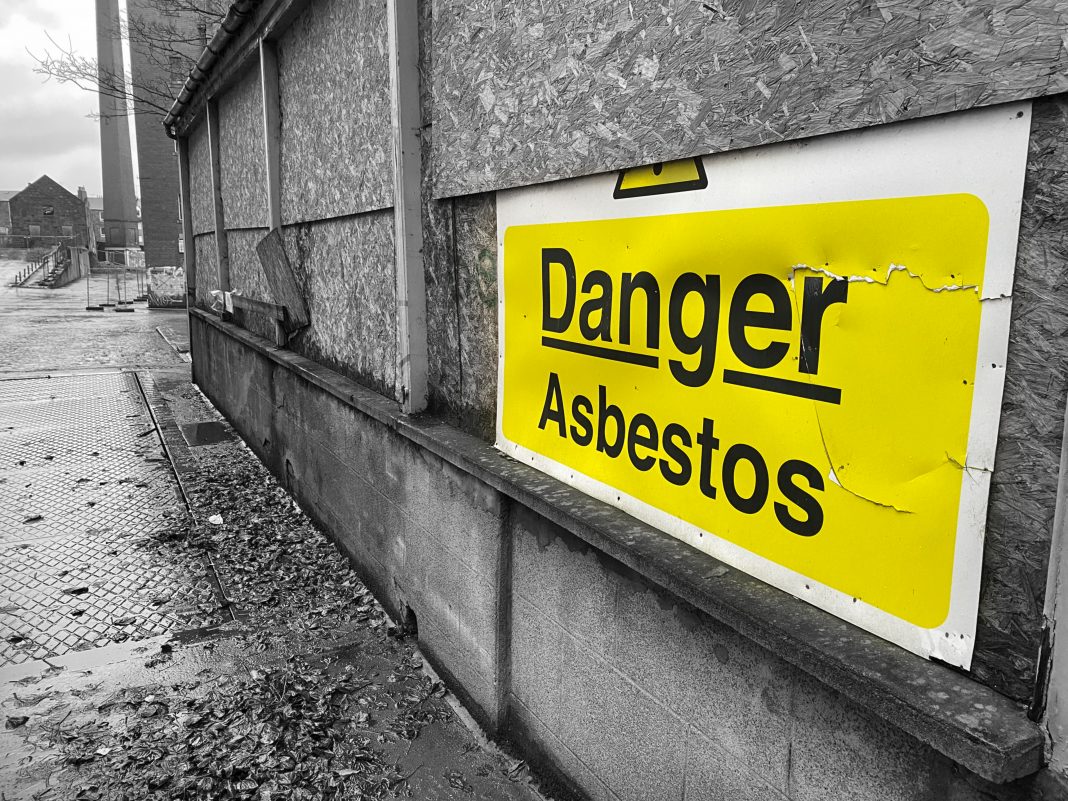Sylvie Gallage-Alwis, co-founding partner, Signature Litigation, explores the statistics contained in the latest FIVA report to highlight that asbestos claims are again at the centre of litigation
Each year, the Asbestos Victims’ Indemnification Fund (Fonds d’Indemnisation des Victimes de l’Amiante – FIVA) publishes a report on the number of claims it has received the year before and the litigation it has decided to launch against corporations to obtain reimbursement of the sums paid to the employees recognised as having developed an occupational asbestos-related disease by French Social Security. The same is done by the HSE in the UK.
The report relating to the year 2020, published at the end of summer 2021, is of particular interest as it shows that even if the pandemic had an impact on asbestos litigation in France, the number of new diseases is still significant, while past reports could have led to the conclusion that this litigation was coming to an end.
The annual report indeed reveals that following a strong increase in 2019, 2020 has seen a 13% decrease in the number of claims for asbestos-related occupational illnesses recognised (17,023 in 2020 / 19,725 in 2019). This being said, according to the FIVA, on 31 December 2020, more than 1,000 applications had still not been dealt with due to the difficulties related to the Covid-19 pandemic. The recorded decrease is hence merely a statistic and does not reflect reality.
17,023 asbestos claims in 2020
In 2020, 17,023 new claims for compensation have been submitted to the FIVA, and €233.9 million have been dedicated to compensating victims and their beneficiaries.
Following the trend recorded in 2019 of the number of victims who directly approach the FIVA to obtain compensation when they consider having developed an asbestos-related disease, the FIVA has seen a record figure in 2020 of 99.1% (compared to 98.2% in 2019) of victims who would have approached it to obtain compensation rather than turn to the courts.
The health crisis has strengthened the victims’ feeling that they ought to directly contact the FIVA instead of launching litigation, in particular, when, in spite of the different lockdowns and the general implementation of remote working, the FIVA indicates that the average processing time only very slightly increased in 2020, going from four months in 2019 to six months and one week in 2020.
Another explanation can be found in the fact that the FIVA has revealed that “in 26% of cases, the medical assessment of the FIVA was more favourable than the assessment of the victim’s social security body“.
Amongst the published data, the FIVA confirms the trend recorded last year when it indicates that “for the second year in a row since the creation of FIVA, most of the claims come from victims suffering from serious illnesses (53.3%)“.
Lung cancer and asbestos
Like last year, lung cancers are the disease that still costs the FIVA the most and more than four-fifths of expenses are dedicated to compensating for serious illnesses. As such, lung cancer represents 49.7% of diseases declared, mesothelioma represents 37.4%, asbestos 2.8% and other benign diseases (such as pleural plaques) 9.2%.
In the UK, the HSE reported that in 2019 there were over 5,000 asbestos-related disease deaths per year currently, including mesothelioma, lung cancer and asbestosis, 2,369 Mesothelioma deaths in 2019, with a similar number of lung cancer deaths linked to past exposures to asbestos and 490 deaths in 2019 mentioning asbestosis on the death certificate.
With respect to the amounts offered to the victims, the FIVA indicates that it grants the following average compensation per disease:
- Lung cancer: 151,532 Euros
- Mesothelioma: 141,954 Euros
- Asbestos: 41,725 Euros
- Pleural thickening: 23,401 Euros
- Pleural plaques: 19,722 Euros
- Other diseases: 61,691 Euros
In the UK, during the debates relating to the Mesothelioma Lump Sum Payments (Conditions and Amounts) (Amendment) Regulations 2021, it was highlighted that “in the last full year for which data is available—April 2019 to March 2020—3,220 awards were paid under the 1979 Act, totalling £42.7 million, and 450 people received payments under the 2008 Act, totalling £9.7m million. Overall, 3,670 awards were made across both schemes in 2019-20 and expenditure was £52.4 million”.
According to the latest report of the Diffuse Mesothelioma Payment Scheme, “the average (mean) payment made to successful applicants in the 12 months to March 2021 was £144,000 and was the same as the average (mean) payment in the 12 months to March 2020”.
Reports of larger amounts of damages can be found, such as the recent settlement of £1 million granted to the family of a man who would have died of an asbestos-related disease at age 58 following exposure as a child through his father who worked as an engine fitter with British Rail.
Rise of litigation in light of favourable case law for the FIVA
More interestingly, it ought to be noted that the FIVA can decide to file a claim for reimbursement of the sums paid to the victims against their former or current employer. The FIVA is then subrogated into the victim’s rights and can claim for damages on the ground of the gross negligence of the company in the way it managed the asbestos-related risk.
In this respect, the FIVA states that it has an 86% success rate in its claims against corporations for reimbursement of the sums paid to the victims, with, in 62% of cases, additional compensation for said victims granted by French Courts.
As such, the FIVA indicates that in spite of the health crisis in 2020, it still brought 659 subrogation claims (compared to 692 in 2019). The FIVA indicates that on 31 December 2020, it was handling a total of 2,499 active cases.
This is not surprising in light of the highly unfavourable case law for employers, in spite of a shift of case law in 2015 in the field of gross negligence and the transformation of the safety obligation from an obligation to achieve a specific result (obligation de résultat) to an obligation to use appropriate means (obligation de moyens).
Indeed, a company will be found gross negligence if it can be proven that it should have known of the dangers it was exposing its employees to and did not take the appropriate measures to protect them against such dangers. When it comes to asbestos, French Courts consider that companies should all have known of the dangers linked to asbestos, even before asbestos was banned in France (in 1997) as Social Security had recognised, since 1945, the link between asbestos and some specific diseases (Decree dated August 3, 1945).
As for the safety measures taken by companies, the latter face the difficulty of gathering strong evidence dating back more than 40 years ago, while Courts have set the bar very high when analysing such evidence and place the burden of proof on the company even if it is the defendant.
Therefore, unlike in the United States, companies cannot even argue that the plaintiff and/or the FIVA do not demonstrate undue exposure to asbestos. Since 2009, the French Supreme Court even considers that companies should have gone beyond what the law required (July 9, 2009, case no. 08-16934). As such, it is very rare to have Courts rule that a company was not gross negligent when it comes to asbestos-related diseases.
In addition, as soon as the disease at stake is one of the diseases listed in the Social Security Code (lung cancer, mesothelioma, asbestosis, pleural plaques, pleural thickening), there is a presumption that the disease is linked to asbestos and is an occupational disease. It is almost impossible for companies to reverse the burden of proof.
For instance, there is no smokers’ defence in France such as the one that exists in the United States. In the same line, the employer cannot argue that the plaintiff lived in a house containing asbestos or used products containing asbestos outside of his/her working hours.
There is also a presumption that the disease was developed while the plaintiff worked for his/her last employer. This rule is meant at making the FIVA’s or the plaintiff’s task much easier as it entitles them to file a claim against the last employer and places the burden on the latter to identify and sue previous employers or companies which may have (also) exposed the plaintiff to asbestos and may have disappeared when the file is claimed.
Another case law trend is the fact that Social Security is not obliged to share with the companies a copy of their investigation file anymore. Most companies must therefore defend themselves without having access to the medical record of the plaintiff, which makes the French legal system very different from the one existing in the United States or in the UK.
Anxiety damage
In light of its high success rate, the FIVA has recently decided to add to the standard items of loss for which it claims compensation (physical, moral, amenity, aesthetic damage), a specific and new “anxiety damage”. This anxiety damage would relate to the fear of seeing the diagnosed disease worsen (e.g., pleural plaques turning into lung cancer). This new request is surprising as French Courts were already compensating plaintiffs for their “moral damage” which, in our view, encompasses the fear of having one’s health worsen.
The FIVA now explains that it would be unfair to have the anxiety damage of employees who have not developed any disease recognised, while the anxiety to have a new disease developed would not be compensated. This new claim which aims at increasing the number of damages granted can probably be explained by the decision of the Plenary Assembly of the French Supreme Court on April 5, 2019, whereby “asbestos” actions are now admissible even for the employees of sites that are not listed in the Ministerial Orders listing sites triggering the right to the asbestos workers’ early retirement allowance (decision no. 18-17.442).
This trend of the development of “anxiety damage” should not be underestimated. Indeed, in France, the Supreme Court’s decision of 11 September 2019 extended the anxiety damage to any hazardous substances, not limiting existing case law to asbestos anymore (decisions no. 17-18.311 17 & following).
At EU level, on 15 July 2021, the Committee on the Environment, Public Health and Food Safety issued an opinion for the Committee on Employment and Social Affairs with recommendations to the European Commission on protecting workers from asbestos, including the recommendation to generalise the recognition of the anxiety damage and make compensation easier.














